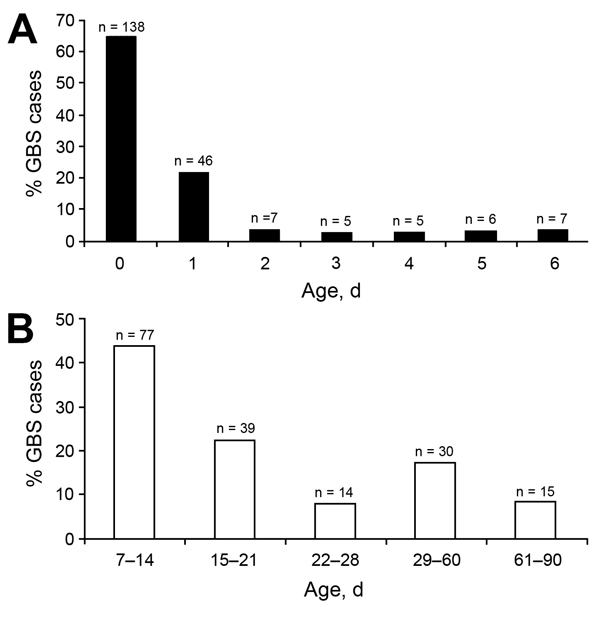Volume 21, Number 4—April 2015
Research
Increased Risk for Group B Streptococcus Sepsis in Young Infants Exposed to HIV, Soweto, South Africa, 2004–20081
Figure 1

Figure 1. Age distribution of young infants (0–90 days of age) with invasive group B Streptococcus (GBS) sepsis, Soweto, South Africa, 2004–2008. A) Distribution for 214 infants with early-onset disease. B) Distribution for 175 infants with late-onset disease.
1Preliminary results from this study were presented at the 8th World Congress of the World Society for Pediatric Infectious Diseases, November 19–22, 2013, Cape Town, South Africa.
Page created: March 17, 2015
Page updated: March 17, 2015
Page reviewed: March 17, 2015
The conclusions, findings, and opinions expressed by authors contributing to this journal do not necessarily reflect the official position of the U.S. Department of Health and Human Services, the Public Health Service, the Centers for Disease Control and Prevention, or the authors' affiliated institutions. Use of trade names is for identification only and does not imply endorsement by any of the groups named above.